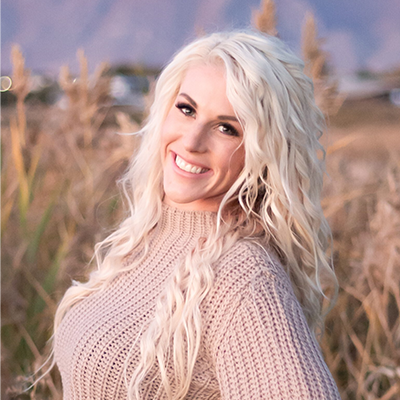Over the past year, ranchers have been enjoying a prolonged peak in the cattle market. For many of us, the larger profit margin (on calves especially) has allowed us to pay down some debts, invest in our operations, and even begin to recoup some of the money that drought has eaten away during the last decade.
The big question though, is not if the cattle markets will dip again, it’s when. The cattle markets, like all commodity markets in the U.S., are cyclical – meaning that troughs will always follow peaks and vice versa. Ag-Risk Consultant, Ross Bronson believes we are now at the tail end of a peak, as he explained during his presentation at this year’s Cattlemen Connect Education Series held in Illinois.
So, how can you be prepared to not only weather the inevitable downturn but also take full advantage of the next peak? Below, we’ll review strategies that Ross recommends to evaluate risk and develop a risk management plan that allows you to remain sustainable in any market condition.
Why A Risk Management Plan Is Important:
Studies show that when a decision-maker has a vague or ambiguous understanding of the elements of risk in a given situation, they’re more likely to base their decision on emotions or instinct rather than facts and analysis1.

Having a risk management plan in place before you’re in crisis mode enables you and/or your decision-makers to do the opposite, helping your operation adapt and remain sustainable long term.
How to Evaluate Risk:
Risk evaluation on a ranch can easily become overwhelming. There are so many uncontrollable variables like the weather, policy changes, market shifts, etc., that it can feel like you’re being attacked on all fronts.
To combat this, Ross recommends separating your areas of risk into 5 distinct categories: legal, human, market, production, and financial.

Legal/Institutional Risk
Your legal or institutional risk category encompasses anything from forward contracting to changes in laws or regulations and even potential or active lawsuits.
To fully understand this area of risk, and build an effective strategy for your operation, Ross advises asking yourself the following questions:
- Are your cattle contracted?
- If so, are you able to meet your contractual obligations?
- What is your plan if the answer to the last question is “no”?
- Are you well-versed in the language of the Farm Bill?
- Is there legislation up in the air, either on a local or Federal level, that could affect your operation?
- If so, how will you manage either way that the gavel falls?
Human Risk
Your human risk category centers around you, your employees, visitors, and family members. Consider the following:
- Do you have a plan in place or the funds available to sustain your living expenses and pay your employees (if applicable) in a down market?
- How can you be proactive about managing your mental health?
- How do you plan to retain employees if you cannot afford to increase their financial compensation? What other benefits can you offer?
- Can you replace an employee if they leave? Would you have to?
- Do you have insurance in place if one of your employees, family members, or visitors is hurt on your operation?
* Studies show that 35% of farmers meet the classification for depression, 45% report high stress, 58% meet the classifications of anxiety, and 69% are more susceptible than the general population to chronic stress that can lead to physical and mental illness2. If you’re thinking about suicide dial 1-800-273-TALK (8255), or if you’re a rancher/farmer seeking mental health support dial 1-800-691-4336 for the Avera Farm and Rural Stress Hotline.

Market Risk
These days, market risk should be top-of-mind for cattle ranchers. This category includes your sales timing, the price you can anticipate or know you’ll receive, your marketing avenue, and consumer opinions (especially if you’re a DTC operation). Ask yourself:
- If you expect the market to decline, can you lock in a rate with a contract?
- Will you be happy with the contracted rate when the time comes to sell?
- Would you consider insurance options like a Livestock Risk Protection (LRP) policy?
Production Risk
Your production risk revolves around every area of livestock production: your weaning weights, mortality rates, replacement availability, genetics, etc. Generally, these are questions that ranchers consider every day, or at least at every stage of cattle production:
- What are your replacement costs, for females especially?
- Do the opportunity costs of selling females outweigh the potential replacement costs?
- What does the availability of females look like in your area?
- Can you take any reasonable measures to improve your weaning weights?
- What mortality rate are you expecting, based on your records? Can you take reasonable measures to reduce it even slightly?
- Can you afford to invest in better genetics? What can you anticipate as an ROI on genetic investments; would you still be sustainable if the market declines?
- Are you happy with your percentages? Weaning, calving, per breeding female?
Financial Risk
Financial risk for any farming or livestock operation stretches into all 4 of the prior categories. During his presentation, Ross referred to this category as “all of the above”! You’ll need to consider:
- Your break-even – what prices can you accept to simply recoup your investments?
- Your cost of capital
- The risk of capital for operational adjustments (i.e. hiring staff, letting go of staff, prioritizing genetics, etc.)
- Return on investments for operational shifts (i.e. how much are you spending to make changes, and how much do you expect those changes to bring in?)
Risk Management Strategies
Now that you know how to evaluate your areas of risk, let’s review some strategies that you can implement to effectively manage them. Bronson separates strategies that he recommends into the obvious and the less obvious.
Obvious Risk Management Strategies
According to Ross, some obvious risk management strategies include hedging, forward contracting, careful financial planning, and insurance products like Livestock Risk Protection (LRP) or Livestock Gross Margin (LGM) insurance.
Less Obvious Risk Management Strategies
Ross noted that some lesser-known risk management strategies include taking up a “buy low, sell high” mentality when selling females, retaining ownership of your cattle, and end-user marketing (consider going DTC to hold onto more of the consumer dollar).
He also mentioned taking measures to improve your weaning rates. Ross shared that an 85-90% increase in weaning rates can contribute to about $5,500 in extra revenue for a cow/calf operation, which he recommends you reinvent into improving your infrastructure.
Lastly, Ross also recommends diversifying your operation to spread out risk. This could include incorporating companion grazing animals or harvesting a cover crop. If you’re interested in diversification, you may want to consider learning more about regenerative agriculture.
Conclusion
We’ll wrap it up by saying this: there are a lot of unexpected variables in any agricultural operation, but cattle market declines are not one of them. Cattle prices will dip again, and when they do, a risk management plan can empower you to not only manage them, but also take advantage of them, and prepare for the next upswing.
Sources
*The article above is based on Ross Bronson’s presentation “Are You Ready For The Inevitable Shift In The Cattle Market?” given at the Illinois Cattlemen Connect Education Series.
- Kusev P, Purser H, Heilman R, Cooke AJ, Van Schaik P, Baranova V, Martin R, Ayton P. Understanding Risky Behavior: The Influence of Cognitive, Emotional and Hormonal Factors on Decision-Making under Risk. Front Psychol. 2017 Feb 1;8:102. doi: 10.3389/fpsyg.2017.00102. PMID: 28203215; PMCID: PMC5285332.
- https://ontario.cmha.ca/farmersmentalhealth/

.jpg)


.jpeg)
.webp)




